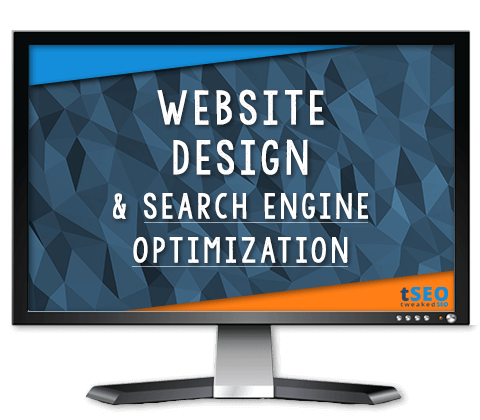What Is SEO
Search Engine Optimization & Website Design
Proper SEO helps lay the groundwork for a new website design. Think of it like the blueprints and scaffolding that holds everything together.
Without it, your website would fall apart - or fail to be indexed properly in google, preventing people from finding it online when searching for relevant keywords.
This scaffolding helps ensure that your new website design meets necessary search engine requirements, so that your company website will flourish across search engine result pages. Proper on-site SEO implementations with close attention to web architecture, semantics, content, link flow and meta tags, can make or break your long term website traffic goals.
Failing to pay attention to these factors during the early stages of development can lead to extended development times and significant re-work after preliminary programming has been completed.
Other Important Design Factors
SEO Website Design
There are many factors that must be considered when designing search engine friendly website's.
Here's a Website Design SEO Checklist:
- Website Migration Plan
- Website Usability / Navigation
- Website Responsiveness
- Website Page Speed / Load Times
- Quality Content / User Engagement
Website Migration Plan
Plan Your Website Migration For Success
In situations where an old website is being updated with an entirely new design, it's crucial to have a proper Website Migration Plan in place. Without such a plan, it's likely existing pages could be missed or page elements and content that users are accustomed to could change.
Ensuring that a new website design properly accounts for all existing pages of the current design will prevent 404 not found error pages for users and search engines alike. Missing proper redirects and configuration of existing pages can lead to decreased rankings, squandering any SEO value pages of a website may have accrued over time.

Significant redesign of page elements and navigation tools can also cause a negative user experience, resulting in extended search times for users that may already be familiar with your site and expecting to find content in a certain area. Make sure any frequently accessed and popular information and links are preserved in similar locations and areas of the new site design.
Website Usability & Navigation
User Satisfaction Impacts SEO
Ensuring that all website visitors have a positive experience after visiting a website is crucial to SEO. Google and other search engines have ways of measuring time on site, pages visited, and other engagement factors, all of which can effect a website's ability to rank on search engine result pages.
Failing to ensure a smooth and intuitive website navigation structure can lead to bad experiences for website visitors. It's important to include links, contact information and calls to action where people expect to find them. Doing so not only leads to increased visitor satisfaction, but also to boosted conversion rates.
Website Responsiveness
Mobile Is Now More Important Than Desktop
With mobile devices becoming the leading trend for online browsing, it's imperative to consider designs and layouts that satisfy a wide variety of screen resolutions. After all, a website will appear quite differently on a mobile device, tablet or desktop.

Taking advantage of responsive website design makes sure that your website not only looks beautiful on different browsers, but also displays information as intended in a clear and concise way to all users.
Website Page Speed and Load Times
Nobody Has Time For Slow Websites
Imagine a situation where a user visits your website, and it takes forever to load - they won't stay long! Part of a positive user website experience is the performance and speed at which pages take to display. Google has also communicated that webpage performance is also a factor calculated into their ranking algorithm.
Often decreasing page load times can be quite simple. A great place to start is by ensuring that images are properly optimized and compressed, reducing wait and load times, especially for image heavy sites.

Additional optimization and compression options are also available, allowing compression of HTML coding, CSS and JavaScript by removing unused white space. Further server side configurations may also be implemented to leverage caching and additional features that will make your website display faster.
Quality Content and User Engagement
Rewards Await For Quality Content Your Users Enjoy
When it comes to search engine optimization and SEO, quality content that engages with website visitors is crucial for success. Gone are the days when keyword stuffing and repetition have any influence on rankings. If visitors to your website fail to engage, or don't find useful information, google and other search engines will know about it, and demote your rankings.
Search engines have complex methods in which they can calculate a variety of telemetry data from every website visitor, allowing them to interpret the website users experience. Time on page and pages visited can both have significant influence on how google views your website as relevant for given search queries.

In conclusion, it's clear to see and understand the importance of SEO in the website design and development process. Failing to follow some basic guidelines can result in what may look like a pretty website, but be a complete failure in generating traffic. Making sure these basic SEO rules are adhered to will ensure website success, drive conversions, increase search engine rankings, and boost user experience.
